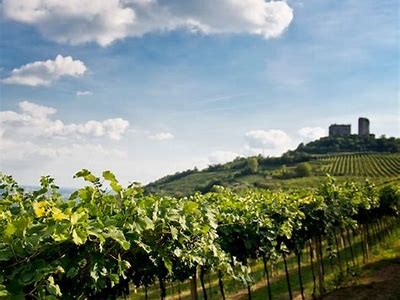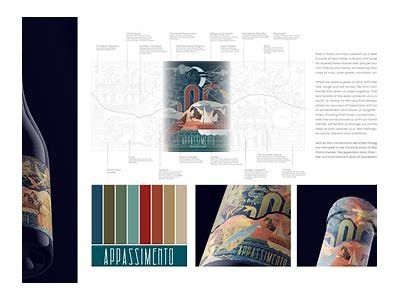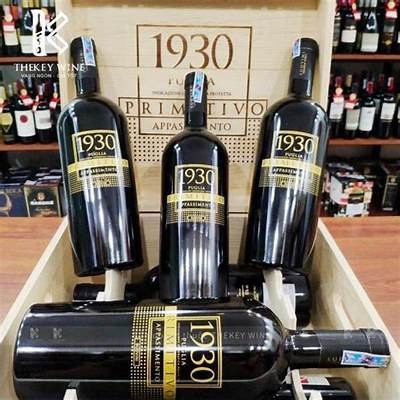Appassimento is a traditional winemaking technique originating from Italy, particularly famed in regions such as Veneto and Tuscany. This unique method involves the drying of grapes before fermentation, allowing the development of concentrated flavors and enhanced aromas in the final wine. This article delves into the intricate process of appassimento, its historical significance, and its impact on the character of the wines produced. By examining both the technical aspects and the sensory experiences of appassimento wines, we aim to provide a comprehensive understanding of this fascinating method.

The roots of appassimento can be traced back thousands of years, with evidence of dried grape wine production found in ancient Roman texts and artifacts. The technique was initially used out of necessity, particularly in regions where harsh weather conditions could compromise grape quality. Over time, however, it evolved into a distinctive style, leading to the creation of renowned wines like Amarone, Valpolicella, and Vin Santo. Understanding the historical context enhances appreciation for the persistence and evolution of this method in modern winemaking.

The appassimento process begins with the careful selection of grape varieties, often focusing on indigenous types such as Corvina, Rondinella, and Molinara. Once harvested, the grapes are laid out on mats or in well-ventilated rooms to dry, typically lasting several weeks. During this time, the grapes lose a significant amount of moisture, leading to a concentration of sugars, acids, and phenolic compounds. This process is crucial in shaping the wine’s flavor profile, as the desiccation enhances the grapes’ natural characteristics, resulting in bold, rich wines.

Temperature and humidity control during drying are pivotal. Winemakers closely monitor the conditions to prevent mold or rot, ensuring that the grapes develop the desired flavors without spoilage. The process can vary significantly depending on regional practices and the particular wine sought, showcasing the artistry involved in appassimento winemaking.

Once the grapes have reached the desired level of desiccation, they undergo fermentation. The concentrated sugars can lead to higher alcohol content, which is often a hallmark of appassimento wines. Fermentation techniques may differ; some winemakers prefer traditional methods with natural yeasts, while others may utilize selected strains for specific flavor outcomes. The fermentation process is critical, as it converts the sugars into alcohol while developing the complex aromatic profile that appassimento wines are renowned for.

The flavor profile of wines produced through the appassimento technique is distinct and multifaceted. Due to the drying process, these wines often exhibit concentrated fruit flavors, ranging from ripe cherries and plums to figs and raisins. Additionally, the complexity of aromas includes notes of dried herbs, spices, and earthy undertones, contributing to a rich and layered tasting experience.
Appassimento wines typically feature a full-bodied mouthfeel and smooth tannins. The higher residual sugars retained during the drying process often result in a sweeter palate, especially in dessert wines like Vin Santo. Tasting these wines is a journey through their intense flavors, providing a delightful contrast to the lighter-bodied wines often produced in other methods. Pairing Appassimento Wines with Food
When it comes to food pairings, appassimento wines offer versatility due to their robust flavors. Red varieties, such as Amarone, complement hearty dishes like braised meats, game, and aged cheeses. On the other hand, dessert wines like Vin Santo can be perfectly paired with sweet treats, including pastries, cakes, and fruit-based desserts. Understanding the flavor profiles can enhance the dining experience, allowing the complementary flavors to shine through. Regions Famous for Appassimento
While appassimento is practiced in various regions, certain areas are particularly notable for their exceptional wines. The Veneto region, home to the prestigious Amarone della Valpolicella, showcases the pinnacle of this technique. Additionally, Tuscany is famous for Vin Santo, made from dried grapes and traditionally served with cantucci (almond cookies). These regions emphasize the cultural significance of appassimento, showcasing its integral role in Italian winemaking tradition. Challenges and Innovations in Appassimento Winemaking
Despite its rich history, appassimento winemaking is not without challenges. The drying process is sensitive to environmental conditions, and fluctuations in temperature and humidity can dramatically affect the outcome. Additionally, as consumer preferences shift towards sustainable and organic practices, winemakers are innovating with new techniques while maintaining the traditional roots of appassimento.
Some producers are experimenting with controlled drying environments, utilizing technology to optimize conditions for grape desiccation. Others are focusing on organic practices to ensure the quality and purity of their wines. This blend of tradition and innovation highlights the dynamic nature of the wine industry and the continued relevance of appassimento in contemporary winemaking. Conclusion
In conclusion, appassimento is a remarkable winemaking technique that embodies the richness of Italian viticulture. Its historical roots, meticulous processes, and unique flavor profiles showcase the artistry involved in crafting these celebrated wines. As the world of wine continues to evolve, the tradition of appassimento remains a vital part of shaping the future of winemaking, inspiring both producers and enthusiasts alike to explore the depth and character of these exceptional wines. Tags
